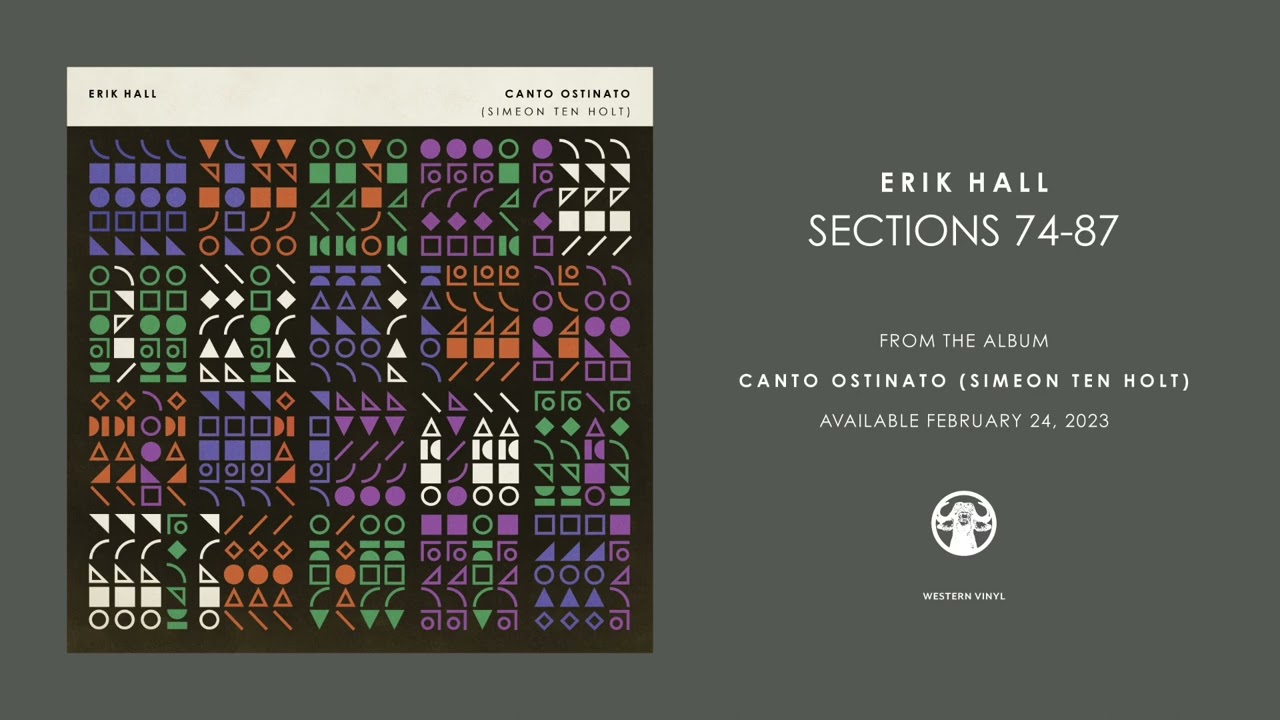Erik Hall – Canto Ostinato (Sections 74-87)

“Нечто невероятное вас ожидает в этой композиции в жанре Modern Classical, которая вместе с очаровательной мелодией и гармонией утреннего рассвета приходит в ваш дом. Освещая всё вокруг себя она радует ваше сердце и наполняет душу глотком чистой энергией.”
“Something incredible awaits you in this composition in the genre of Modern Classical, which, along with a charming melody and harmony of morning dawn, comes to your house. Having lit up everything around herself, she pleases your heart and fills the soul with a sip of pure energy.” *
“Κάτι απίστευτο σας περιμένει σε αυτή τη σύνθεση στο είδος της σύγχρονης κλασικής, το οποίο, μαζί με μια γοητευτική μελωδία και αρμονία της πρωινής αυγής, έρχεται στο σπίτι σας. Έχοντας φωτίσει τα πάντα γύρω από τον εαυτό της, ευχαριστεί την καρδιά σας και γεμίζει την ψυχή με μια γουλιά καθαρής ενέργειας.” *
-Nagamag.com
In 2020, Erik Hall released his version of Music for 18 Musicians by Steve Reich to wide acclaim. His follow up to that project is his take on Dutch composer Simeon ten Holt’s masterpiece Canto Ostinato. It will be the second album in what is now a planned trilogy of classical minimalism interpretations by the Chicago musician. It’s set for a February 24th release on Western Vinyl.
To make the new year, and also to mark 2023 being ten Holt’s centenary/would-be 100th birthday, Hall shares “Sections 74-87” from the piece as the next single, a section of the piece that adds some whimsical elements to its driving rhythmic stucture.
Canto Ostinato was written for four pianos from 1976 to 1979 by the late Dutch composer Simeon ten Holt, the piece is freshly framed as an intimate, hour-long solo performance consisting of multitracked grand pianos, electric piano, and organ.
An apt second chapter, Canto Ostinato is Simeon ten Holt’s blissfully adventurous magnum opus. As a solitary Dutch composer of the mid-20th century avant-garde, ten Holt dared to abandon the fashionable twelve-tone language of his schooling for a return to tonality, the simple triad, and shifting rhythmic patterns. Rather than revert to the old laws of harmony, he employed overlapping, freely repeating shapes with a highly distinctive tonal center to manifest an independent ‘musical object,’ liberating the piece’s overall structure from the written page and defining a new Dutch minimal music.
Reviewed by Nagamag on February 2, 2023
